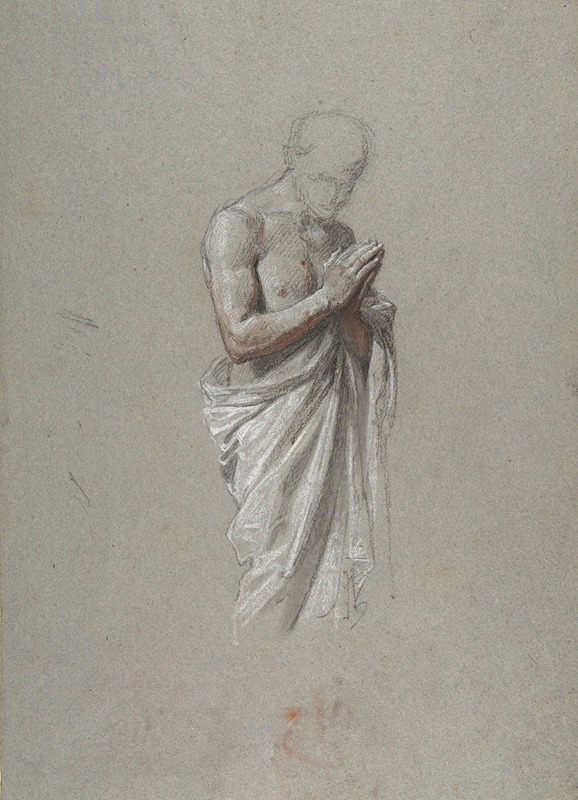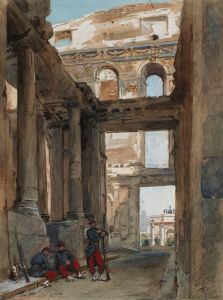
Study for Clovis
A hand-painted replica of Isidore Pils’s masterpiece Study for Clovis, meticulously crafted by professional artists to capture the true essence of the original. Each piece is created with museum-quality canvas and rare mineral pigments, carefully painted by experienced artists with delicate brushstrokes and rich, layered colors to perfectly recreate the texture of the original artwork. Unlike machine-printed reproductions, this hand-painted version brings the painting to life, infused with the artist’s emotions and skill in every stroke. Whether for personal collection or home decoration, it instantly elevates the artistic atmosphere of any space.
Isidore Pils was a notable French painter of the 19th century, recognized for his historical and religious compositions. One of his works, "Study for Clovis," reflects his interest in historical themes, particularly those related to French history. Although detailed information about this specific study is limited, it is essential to understand the context in which Pils worked and his broader artistic contributions to appreciate this piece.
Isidore Pils was born on July 19, 1813, in Paris, France. He studied at the École des Beaux-Arts under François-Édouard Picot, a prominent neoclassical painter. Pils' early works were heavily influenced by the academic style of his mentor, focusing on precise draftsmanship and classical themes. Over time, Pils developed his unique style, characterized by a blend of realism and romanticism, which became evident in his historical paintings.
The subject of Clovis, the first King of the Franks to unite all the Frankish tribes under one ruler, is a significant figure in French history. Clovis is renowned for his conversion to Christianity, which played a crucial role in the Christianization of the Frankish kingdom and the establishment of the Merovingian dynasty. This historical context likely influenced Pils' decision to create a study focusing on Clovis, as it aligns with the 19th-century French artistic and cultural interest in national history and identity.
Pils' "Study for Clovis" would have been a preparatory work, possibly intended for a larger composition or as part of a series of works exploring the life and impact of Clovis. Studies are typically created to experiment with composition, form, and lighting, allowing the artist to refine their ideas before executing the final piece. While the specifics of this study are not well-documented, it is reasonable to assume that Pils employed his characteristic attention to detail and historical accuracy in its creation.
Throughout his career, Pils received numerous accolades for his work, including the prestigious Prix de Rome in 1838, which allowed him to study in Italy. His time in Rome exposed him to Renaissance and Baroque art, further influencing his style. Pils' notable works include "Rouget de Lisle Singing La Marseillaise" and "The Death of a Sister of Charity," both of which demonstrate his skill in capturing emotion and narrative depth.
In addition to his historical paintings, Pils contributed to religious art, creating altarpieces and murals for churches. His work on the decoration of the Church of Saint Vincent de Paul in Paris is particularly noteworthy. Pils' ability to convey complex historical and religious themes with clarity and emotion solidified his reputation as a leading artist of his time.
While specific details about "Study for Clovis" remain scarce, Isidore Pils' broader body of work provides insight into his artistic approach and the historical themes that captivated him. His dedication to exploring French history through art continues to be appreciated by scholars and art enthusiasts alike.


















